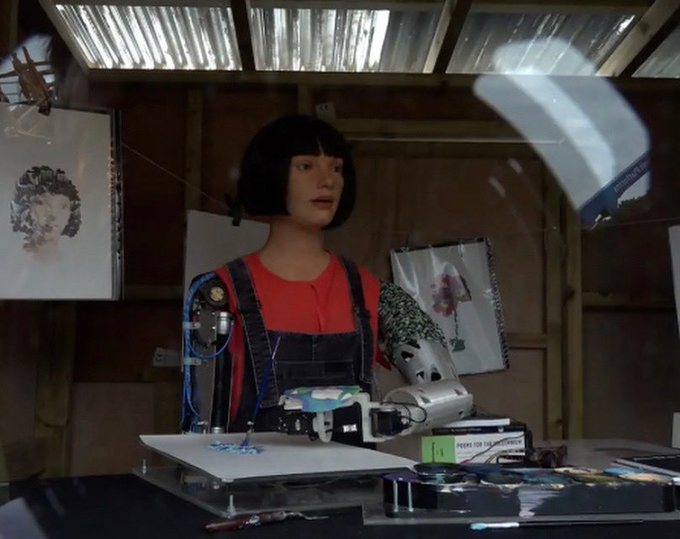In the past few years, hundreds of AI arts have emerged. Using algorithms they create unique, bizarre, but also stunning visual arts. One of them is Midjourney, the AI art which able to transform text from users into wonderful images. Midjourney allows users to join its Discord server and to feed in their prompts to create four images based on the text given.

Another AI art is an ultra-realistic artist robot called Ai-Da. Based on her AI algorithms, she can create many drawings, paintings, and also sculptures. She has robotic arms and a camera in her eyes to help her to create works. Her paintings are bright colors in abstract form, and remind me of sunshine, blue sky, and reflection in the water.


Everyone can also generate their painting through Wombo Dream that can combine words entered by users and an image to produce an astonishing painting. The users simply click on Start Creating on the Wombo Dream website, enter a prompt, chose art style, upload an image or click on one of the suggested input images, then click on Create. Voilà! You have your own Ai art!
Despite the rapid rise of AI art, it has persistent issues, such as “can AI art be considered as being creative?”, “should AI art be seen as opposed to human creativity?”, and “does AI art have the potentiality to pave the way for greater humans’ creativity?”
But, what is creativity? Creativity more or less can be defined as “the ability to produce or use original and unusual ideas” (Cambridge Dictionary online). To some extent, AI also doing something creative. Mingyong Cheng (2022) quotes Margaret Boden, writer of The Creative Mind: Myths and Mechanisms, and shows three kinds of creativity that AI art have: combinatory, transformational, and explanatory creativity.
The combinatory creativity highlights the capability of “making unfamiliar combinations of familiar ideas”. For example, an AI art can generate a painting based on thousands of portraits across centuries. The AI art serves the work in a totally different form, context and meaning compared with those old portraits. (Cheng, 2022)
Transformational creativity emphasizes the transformation of an abstract space to produce a work that has never been seen. AI programs, like Google’s Deep Dream and Wombo’s Dream, have successfully created dream-like images based on abstract concepts given by users. (Cheng, 2022)
Explanatory creativity asserts the capability to produce “novel concepts and thoughts by exploring conceptual spaces and styles.” At first, “the exploration should be consistent with the standards style”, but then the program can spin it into unexpected and new concepts. The AI’s algorithm should ‘learn’ the previous styles and artworks to create a new concept. (Cheng, 2022)
It might sound strange to say that AI art also has creativity. However, the definition of art and creativity always change over time. In the Ancient Greek and Middle Ages, art comes from divine inspiration. Today, art is entirely made by humans as an independent agency that can feel, think, and act by themselves. It is not impossible, if someday creativity might be not only human’s domain, but also belongs to AI art.
AI art also allows humans to get greater possibilities for learning “the psychological process of creating art” (Cheng 2022), which someday probably will be useful to develop the art world and civilization.
